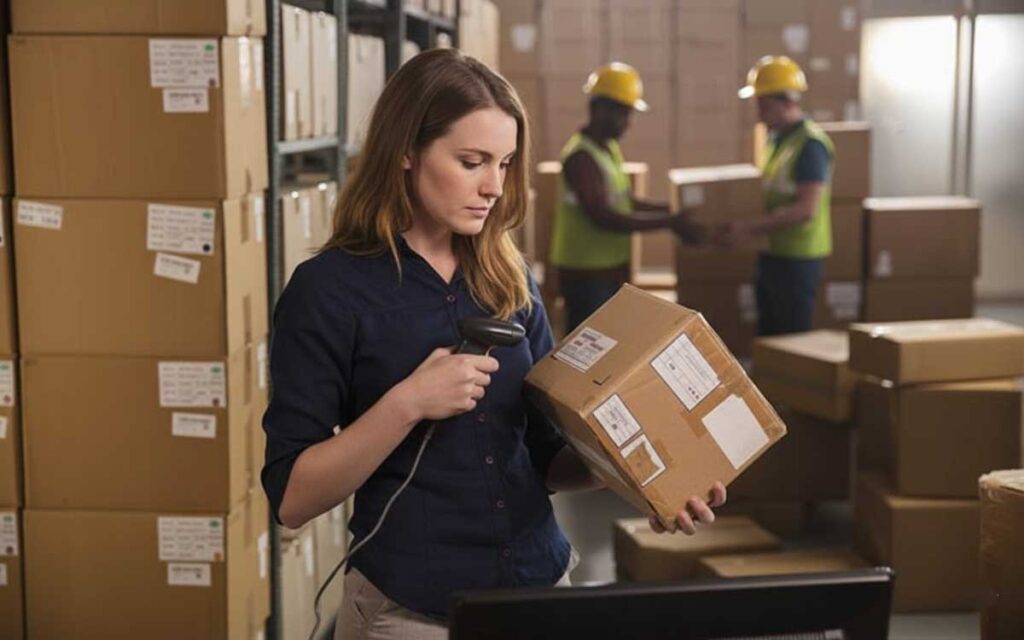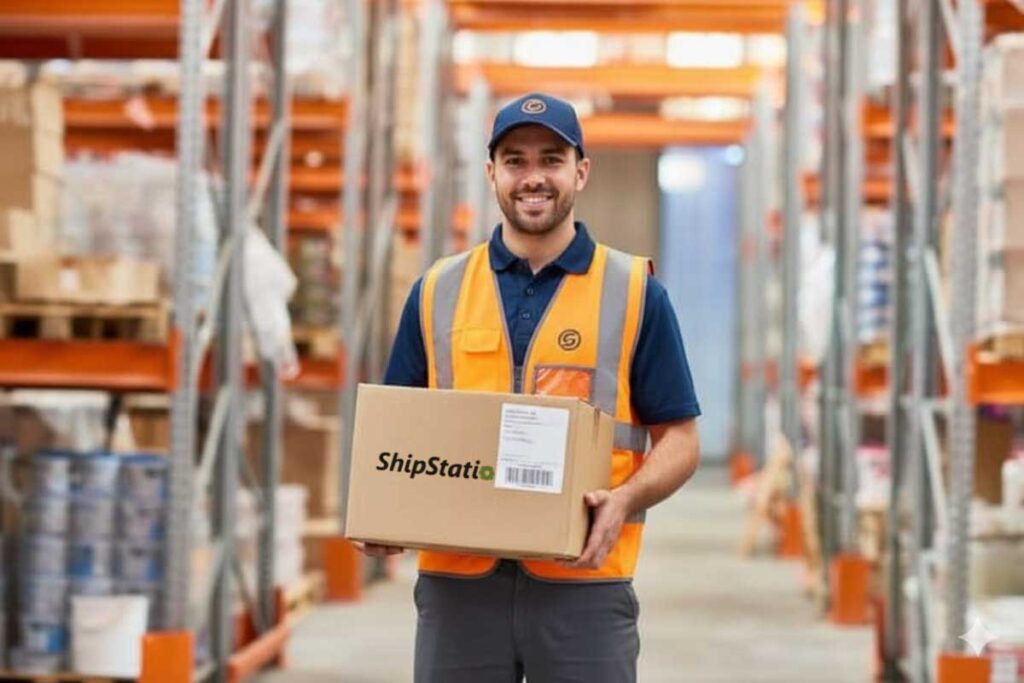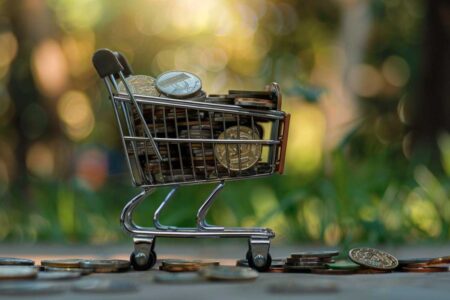Auctane ShipStation is the shipping software many stores use to buy labels and track orders in one spot. If your label or tracking page says Auctane ShipStation, here’s what that means, how tracking works, and who to contact if a package stalls, so you can fix issues fast.
What is Auctane ShipStation
Auctane is the parent company behind several shipping tech brands. ShipStation is one of them, a dashboard that pulls in orders from Shopify, Etsy, Amazon, and other channels so sellers can print labels, pick carriers, and send tracking updates. If you’re wondering what is auctane shipstation, it’s the software layer between the store and the carrier. In simple terms, you buy from a store, the store uses ShipStation to generate the label, the carrier picks up and delivers.
You might also see sister brands like Stamps.com, Endicia, GlobalPost, ShipEngine, Metapack, ShippingEasy, ShipWorks, Packlink, and Return Rabbit. Same family, different tools, so spotting any of those on a label or page is normal.
Auctane ShipStation, how a label is made
From store or marketplace, through ShipStation, to the carrier, then to you.
Tip, labels can sometimes show another Auctane brand or a warehouse name. That is normal for privacy and multi brand operations.
Why am I getting an Auctane ShipStation package
Totally normal. Common reasons:
- You bought from a marketplace seller who runs shipping with ShipStation.
- A brand uses a third party fulfillment partner, and that partner prints labels through ShipStation.
- A warehouse, a 3PL, ships the order and batch prints labels with ShipStation.
Result, the label may show ShipStation or a partner name instead of the store, but a carrier like USPS, UPS, FedEx, or DHL still does the delivery.
Auctane ShipStation tracking
Where to find your tracking number
Check your order confirmation email, your account page on the store or marketplace, or the label on the box. Some sellers also share a branded tracking page.
How to track
Paste the number into the carrier site or app for the freshest scans. “Label created” means the label’s printed, the box may still be waiting for pickup. After the first scan you’ll see “In transit,” later “Out for delivery,” and finally “Delivered.” I paste the number into the carrier site first, then check again after that first scan shows up. While you wait, these online shopping tips help cut down surprises at delivery.
Carrier handoff and delays
Labels can print hours before pickup, so a short stall at “Label created” is normal. If nothing moves after two or three business days, message the seller with your order number and the tracking link. Only the seller can open a carrier claim. If they don’t reply within two business days, open a case with the marketplace or your card.
How to track an Auctane ShipStation package
- Find the tracking number in your order email or account.
- Paste it into the carrier site, USPS, UPS, FedEx, or DHL.
- If it says “Label created,” wait for the first scan.
- No scan after two or three business days, contact the seller with your order number and link.
Who uses ShipStation
Here’s who uses it, solo sellers shipping from home, Shopify and Etsy shops that need one place for all orders, DTC brands during drops, and 3PLs that ship for many stores at once. Teams pick it for automation rules, rate shopping, and fast batch printing. ShipStation connects to hundreds of stores, marketplaces, carriers, and apps, which is why one dashboard works for so many businesses.
Why the label shows ShipStation
Your label can show ShipStation, a warehouse or 3PL, or another Auctane brand like Stamps.com, Endicia, or GlobalPost. In some workflows a consolidated label prints first, then the carrier applies a final label downstream, all normal. Shops sometimes use a neutral sender name to protect customer privacy and to ship multiple brands from one warehouse without confusion. Sellers generate labels with either their own carrier accounts or ShipStation’s built in connections.
Companies that use ShipStation, examples
You’ll see it across apparel and accessories, beauty, electronics gear, food and beverage, and specialty retail. Case studies often highlight automation, batching, and using multiple carriers without tab hopping when volume jumps. For a familiar example of clear returns flow, our Zappos return flow example is a useful reference.
Buyer tips

Who to contact for help
- Confirm it’s legit. Match the tracking number to an order email and the last four digits of the card on that order.
- Track on the carrier site. USPS, UPS, FedEx, or DHL will show the freshest scans.
- Know who to contact. Reach out to the seller or marketplace support first. ShipStation is software, not the merchant or the carrier, and only the seller can open a carrier claim.
- Return smarter. Before you ship something back, skim our return policy basics and see how Shoes.com shipping and returns work in practice.
- Fit smarter, ship less. Try 3 ways to get the perfect fit online so you return fewer items.
Seller tips
Fast setup checklist
- Connect your store channels and marketplaces.
- Add carriers, your own accounts or ShipStation Carriers.
- Create automation rules for service, weight, insurance, and customs.
- Turn on branded tracking pages and email notifications.
- Set up returns so buyers can generate labels without back and forth.
Time savers
Use presets for common box sizes, batch print at pickup time, and compare rates before you buy to keep costs in check.
Pricing snapshot. Entry plans generally start near $15 per month in USD for low volumes, with higher tiers for bigger shipment counts. Prices change, and certain carriers or add ons can affect your monthly cost, so always confirm current pricing on ShipStation’s site.
Carrier connections. Connect ShipStation Carriers or your own UPS, USPS, FedEx, DHL, and regional accounts so you can rate shop in one screen.
First hand walkthrough
I pasted a sample tracking number into USPS and saw “Label created,” which only means the seller printed it. An hour after pickup it flipped to “In transit,” then “Out for delivery” the next morning, and “Delivered” by lunchtime. If it had stayed “In transit” with no new scans for a few days, I’d message the seller with my order number and ask them to open a trace with the carrier.
Status cheat sheet
| Status on tracking | What it means | What to do |
|---|---|---|
| Label created | Label printed, package may still be waiting for pickup | Give it a day for the first scan, then track on the carrier site. If nothing updates in 48 hours, message the seller with your order number. |
| In transit | Carrier has it and it is moving through hubs | Normal. If no new scans after 2 to 3 business days, contact the seller and ask them to check with the carrier. |
| Out for delivery | On the local vehicle | Be available, check any delivery notes. If it rolls to the next day twice, ask the seller to escalate. |
| Delivered | Marked delivered at address | If missing, check photo or GPS on the carrier page, ask neighbors, then contact the seller the same day. |
| Exception, delay | Weather, address issue, or carrier miss | Update delivery instructions on the carrier page if available, and ask the seller to escalate if there’s no movement in 24 to 48 hours. |
| Returned to sender | Could not deliver | Ask the seller for the return reason code, wrong address or refused, then choose reship or refund. Read our return policy basics so you know the window and any restocking rules. |
Watch out for scams
- Confirm orders through your email receipts, not random texts.
- Don’t click tracking links from unknown texts or DMs. Paste numbers into the carrier site instead.
- Check that the sender email matches the store domain, not a free mailbox.
- Your bank won’t ask for full card numbers or one time codes by text. If in doubt, call the number on the back of your card.
- If you didn’t place an order that matches the tracking, contact the marketplace or your card issuer. You can also review our Returns and Exchanges Policy for how we handle issues.
Privacy, quick note. ShipStation says it complies with common privacy laws. Your order and address are used to create labels and tracking, and you can read the policy on their site any time.
FAQs
What is Auctane ShipStation?
It’s shipping software. Stores use it to buy labels, pick carriers, and send tracking updates. It isn’t a carrier.
Why am I getting an Auctane ShipStation package?
The seller used ShipStation to print your label. A normal carrier like USPS, UPS, FedEx, or DHL is delivering it.
How do I track an Auctane ShipStation package?
Grab the tracking number from your order email, then paste it on the carrier site. If nothing changes after 2 to 3 business days, message the seller.
Why does my label say ShipStation instead of the store name?
Some labels show ShipStation, a warehouse, or another Auctane brand for privacy and operations. The tracking still belongs to the carrier.
Is ShipStation a carrier?
No. It’s software. The carrier moves the box.
Who do I contact if my package is lost?
Start with the seller or marketplace. Only the seller can open a carrier claim. If they don’t reply within two business days, open a case.
What does “Label created” mean?
The label was printed, but the carrier hasn’t scanned it yet. Check again after the first scan. If it stalls for 2 to 3 business days, contact the seller.
Why do I see Endicia or GlobalPost on my label?
They’re Auctane sister brands used for postage and international consolidation. Seeing those names is normal.






